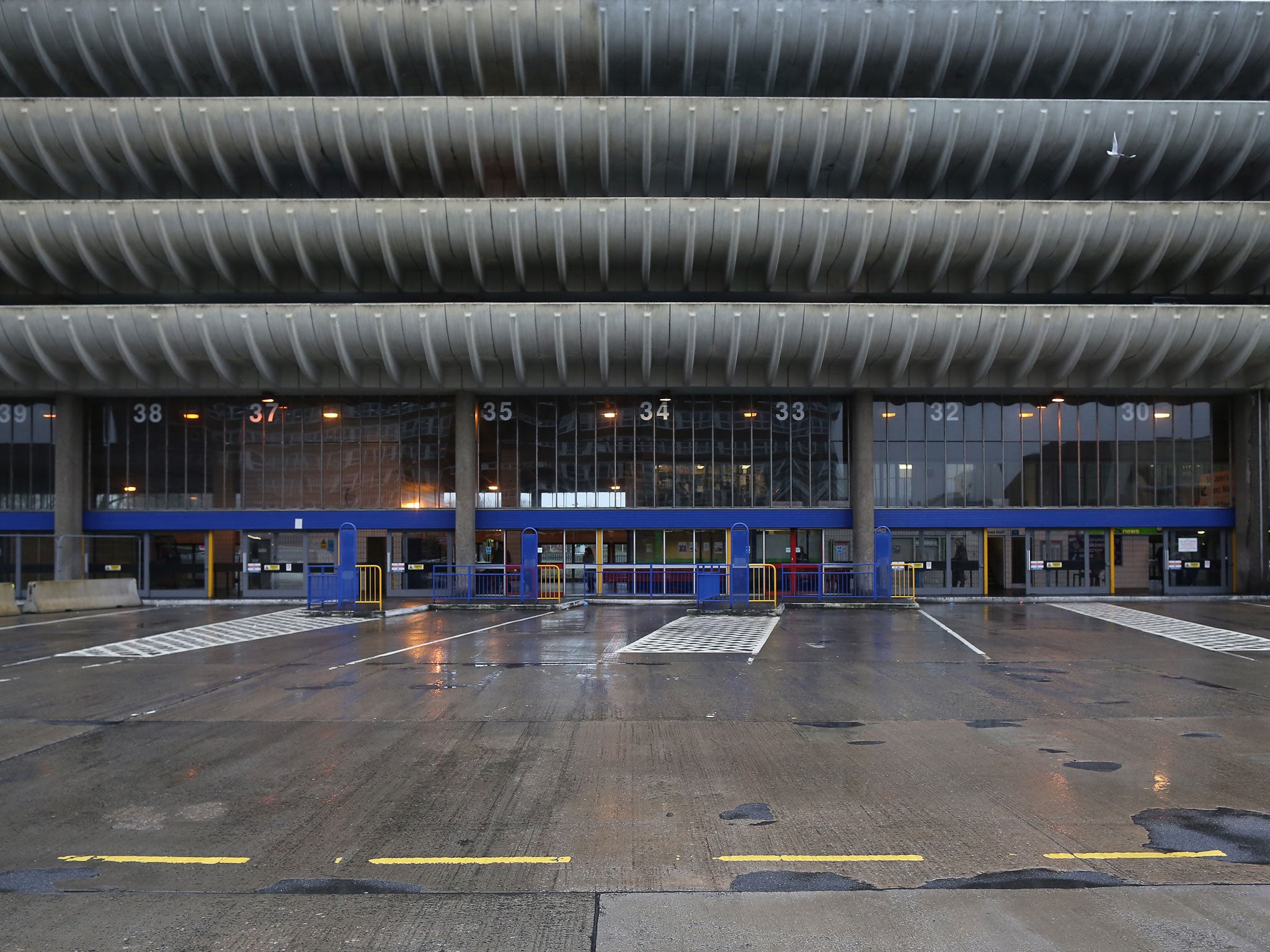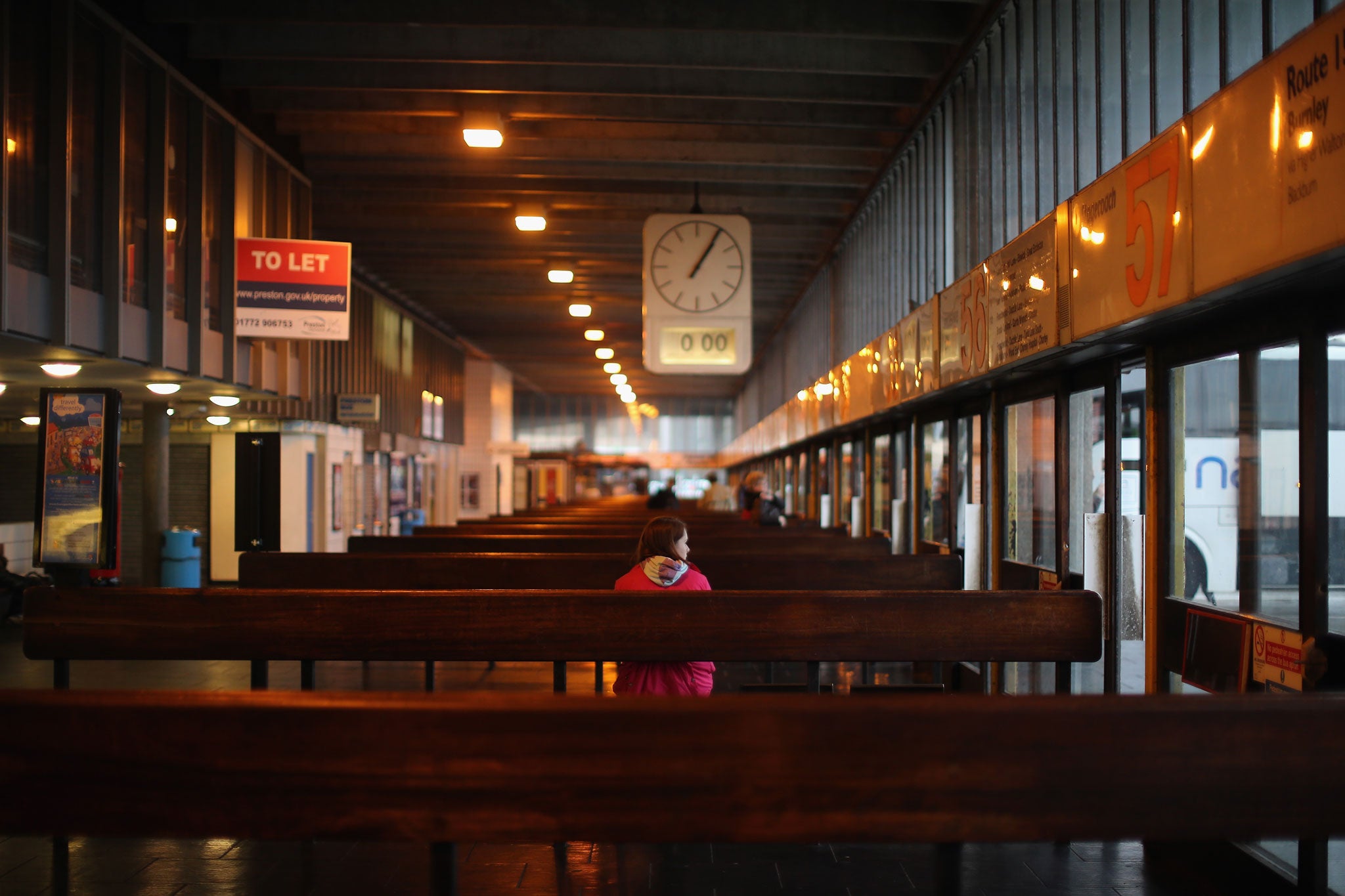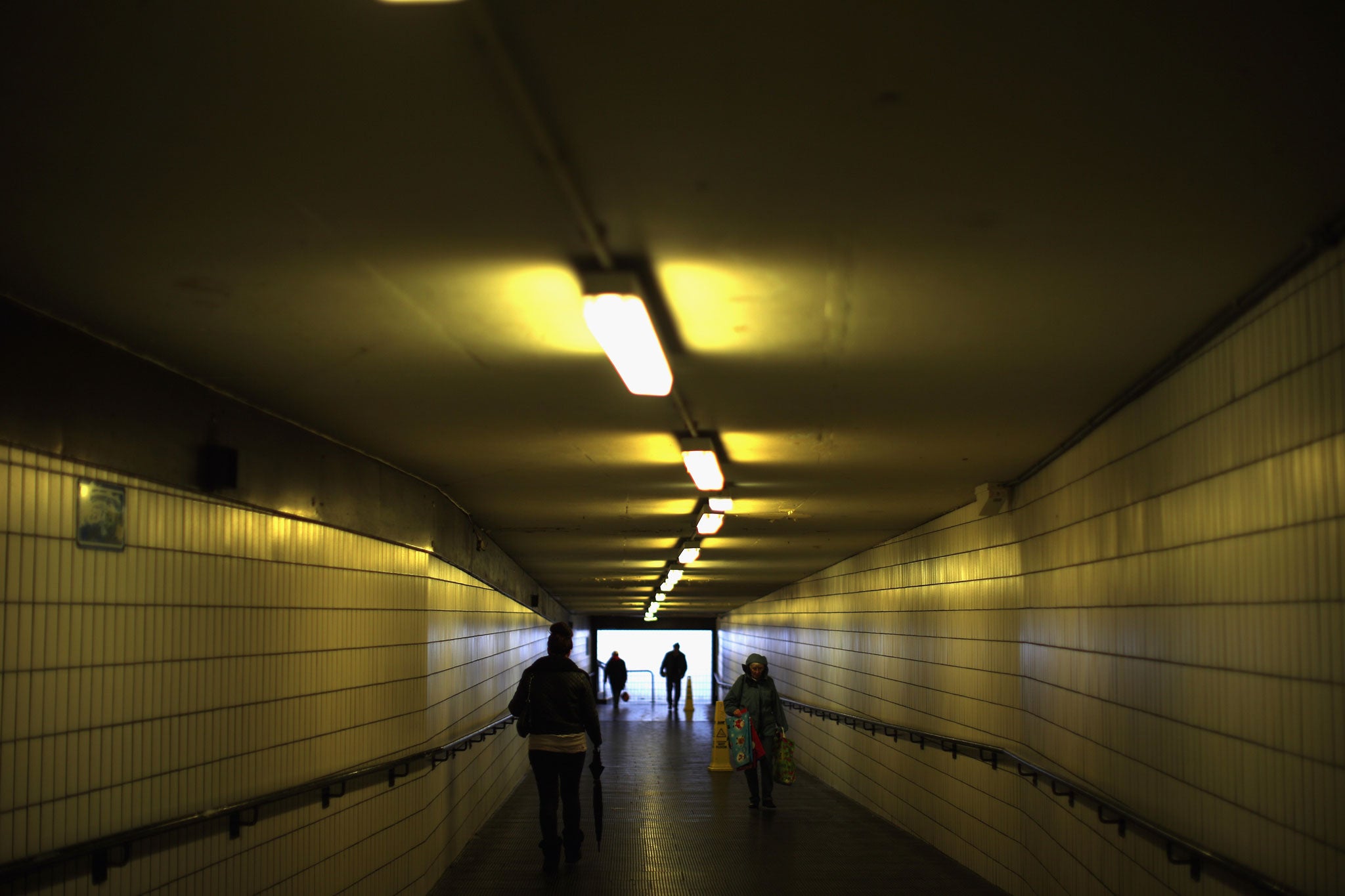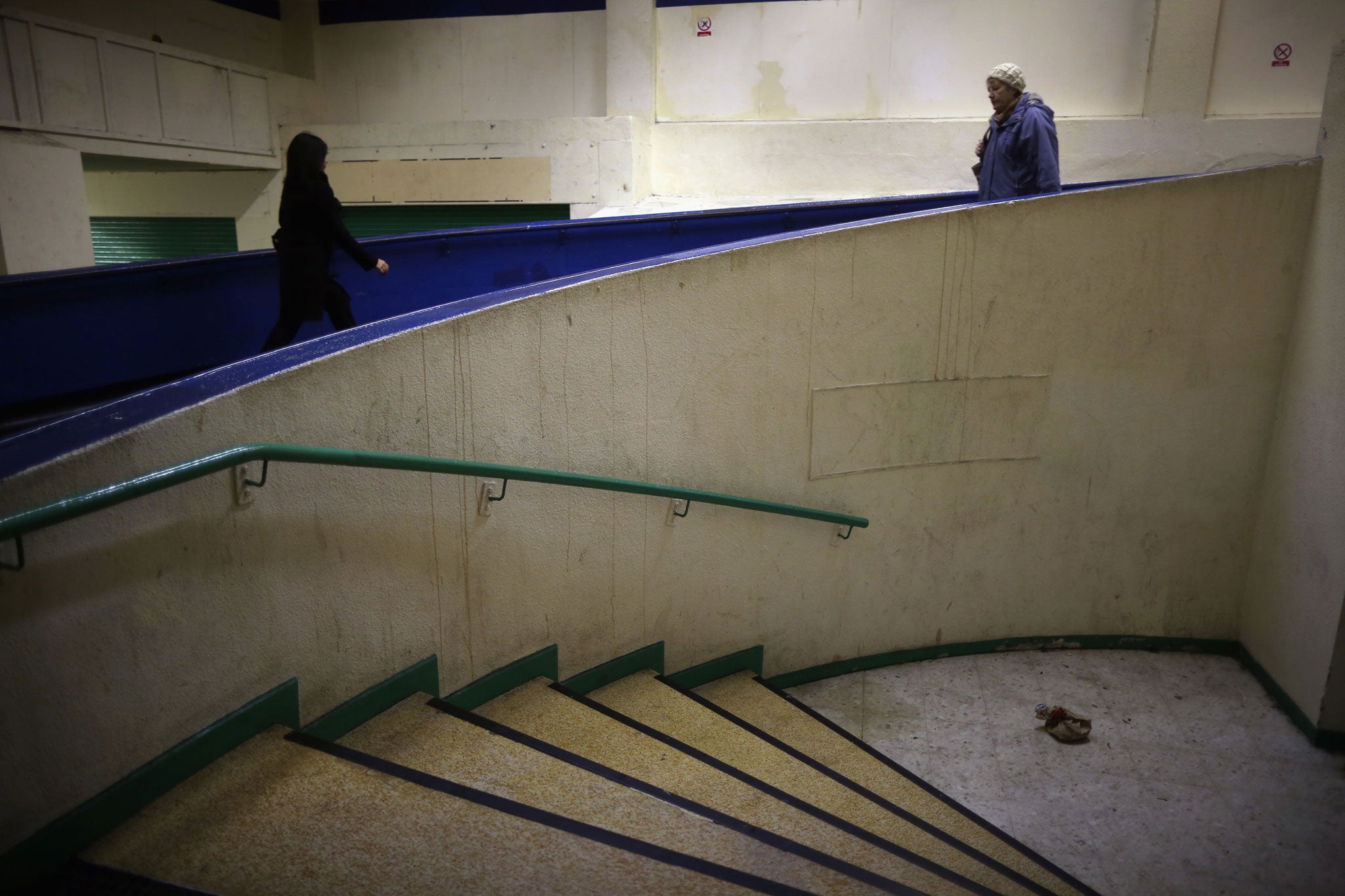Love, hate and concrete: The battle for Preston Bus Station
To some, it's a Brutalist monstrosity which blights the town it purports to serve. To others, it's a practical building of immense beauty

Your support helps us to tell the story
From reproductive rights to climate change to Big Tech, The Independent is on the ground when the story is developing. Whether it's investigating the financials of Elon Musk's pro-Trump PAC or producing our latest documentary, 'The A Word', which shines a light on the American women fighting for reproductive rights, we know how important it is to parse out the facts from the messaging.
At such a critical moment in US history, we need reporters on the ground. Your donation allows us to keep sending journalists to speak to both sides of the story.
The Independent is trusted by Americans across the entire political spectrum. And unlike many other quality news outlets, we choose not to lock Americans out of our reporting and analysis with paywalls. We believe quality journalism should be available to everyone, paid for by those who can afford it.
Your support makes all the difference.There's trouble up North. The Battle of Preston Bus Station, to a London-centric, media-savvy sensibility, has something faintly comic, something mock-heroic about it.
But a battle is what it is. Preston Bus Station (PBS), and the bitter struggle surrounding it, have taken on a momentous, not to say monumental, cast.
It is, depending on how you measure it, the largest bus station in the world, the second-biggest in Europe, and the longest in Europe. It has 80 gates for local and national buses, and a ground-floor area large enough, according to one architectural journal, to house three aeroplanes. The closest personal experience I've had as an adult to walking around PBS is visiting a huge sound stage in Belfast, one of the giant sheds that built the Titanic, and where the film City of Ember was made.
PBS has a sticky, rubber-tiled floor, and a smell that speaks of cheap deodorant fighting an endless battle with something nasty and nameless, and just out of sight. Yet it also has something of the heroic about it: a quality of gigantism that can instil a Hopper-like sense of loneliness, the insignificance in the individual in an engulfing environment. PBS is the kind of building that Stalin would probably have liked. In short, it might be grubby from a user's point of view – but it is most certainly enormous.
And the furore, tumult and general fuss kicked up around PBS is perfectly to scale. The action goes from keyboard to committee room, from web whingers to Westminster, from local pressure-group marches to global preservation lobbyists. Human Geographers at the University of Central Lancashire (UCLAN) in Preston have even published research on the 'assemblage' of pro-PBS groups.
The difficulties began within a few years of PBS' opening in 1969. There was much talk of a population explosion in the 1960s, and Preston had been earmarked to become a new 'Super City'. Provisionally entitled the 'Red Rose Development', the idea was to take the overspill from Greater Manchester and Liverpool and site them in Preston. But the population explosion never came, and Preston was never going to be in danger of being too big for its bus station.
Years of drift – or deliberate neglect, according to the PBS Pros – followed. A £700 million city-centre redevelopment project was mooted by property developers. That fell through, but the prospect of PBS's demolition – an integral part of the redevelopment proposal – remained. English Heritage opposed the demolition plans, and sought listed status for PBS in 2000. That was rejected, as was a subsequent application in 2010. Preston City Council (PCC) owned PBS (an anomaly: Lancashire County Council owns nearly all the county's transport facilities). PCC claimed PBS was unfit for purpose and rotting into the ground. The local newspaper took a poll of readers, which revealed that PBS was their favourite building in the area. A petition was created for a local referendum on the issue. This was rejected by PCC. But the email and Twitter exchanges between Pros and Antis began to increase in volume and intensity. And the 'assemblage' of the Pros began to take shape on a local, national and international level.
The best-known local pressure group is Save Preston Bus Station (SPBS), led by John Wilson, a local broadcaster and retired structural engineer. Wilson has found wide-ranging support, from local photographers, such as Bernie Blackburn, an amusing if mildly obsessive Photoshopper, grafting images of the good and the great into a PBS context. Local writer and photographer Andy Wilson and Paul Adams have made a well-received short film, 56,000 (available on YouTube) in support of PBS, and Professor Charles Quick, professor of public art practice at UCLAN, is another key figure in the local Pro lobby. As are local architect David Robinson, entrepreneur Simon Rigby, and design pressure group, Gate 81.
On a national level, former president of the Royal Institute of British Architects (RIBA), Angela Brady, has been a highly influential lobbyist. Richard Rogers has come out in support of PBS. The Guardian wrote a leader about the "hugely deserving [of a listing]" PBS, which it described as "bold and uncompromising. The great topographer Ian Nairn was awed by it... The Twentieth Century Society has fought without success for it to be listed." English Heritage sent three teams up to look at the city in general and the bus station in particular. The last visit was in summer of last year.

PBS featured on the 2012 World Monument Fund's list of sites at risk, and has long been on Unesco's radar. PBS featured on local and national television shows. These are just some of the larger personalities and groups. Local agitprop, and sustained if diffuse pressure from architectural and design bloggers, grew and grew until September 2013, when PBS was awarded Grade II listed building status by the Culture Minister Ed Vaizey, who cited the previously ignored advice of English Heritage. The listing decision is a triumph for the Pros, albeit not a decisive one. PBS will now almost certainly be saved and transformed. In early December, ownership passed from PCC, which is skint, to LCC, which has some £8.3 million earmarked for the building, with more money to come, probably, in Lottery grants and the like.
You could argue that the whole PBS saga is Swiftian, that the need to have an opinion is as petty as generations of Lilliputians fighting bloody civil war over which end of a boiled egg to break into at breakfast.
"Several council leaders and chief executives from both councils have come and gone, we are still here and so is the bus station," says John Wilson of the SPBS campaign. He's right about that – and the arguments are still there too. They rage on – no longer about whether PBS should be demolished, but about what it really is, and what it should be.
Sometimes the discourse descended well below rational argument, according to Preston City Council leader, Peter Rankin: "There was a lot of abuse on the message boards – some of it intensely personal. After a while, I gave up looking at it... I had found myself waking up at four in the morning thinking about the dilemma of Preston Bus Station. I wasn't having nightmares about it, but it was constantly in my head."
It's undoubtedly true, however, to say that it polarises opinion on just about every level: aesthetic, architectural, iconic (including personal sentimental value), functional, civic, democratic, party-political, and gender-related. (There's an argument that PBS is threatening and unfriendly to women – not just a Brutalist building, but a bit of a brutal one, designed by men for men, and now fought over by them.)
The popular cliché is that PBS is a Marmite building. The argument runs that because of the violence of emotions PBS engenders, they must have put the love-it-or-hate-it yeast extract in the concrete when they were making this huge, Brutalist structure. The term Brutalism, incidentally, comes from béton brut, meaning 'raw concrete' – ie, exposed, unadulterated concrete. Brutalist is much seized upon by those who wish to portray PBS, and similar buildings, as brute-ugly.

Preston Bus Station came into service on 22 October, 1969. Its first day remains luminous in the memory, not least because it was my birthday. I was attending school in Preston, still in short trousers, and childishly unaware what a momentous year 1969 was proving to be. The Beatles would split up, man had already landed on the moon, and hippie enlightenment would morph into something much darker.
All I knew was that 50 pence coins had been issued a week or so before. The coins had an unusual geometry, and were known for years as 'dustbin lids', but they seemed to belong to the same world as the modernist, offbeat PBS. It was with a 50 pence coin that I bought my first Aztec, a discontinued Cadbury's chocolate bar, from one of the newsagent-tobacconist-confectioner shops at either end of the station. The counters were giant rectangles cut into the dazzling, white-tiled, black-grouted walls. The girl serving me might as well have emerged from the belly of a star ship – new station, new coin, new chocolate bar. This was as memorable as a retail experience could ever get.
Gordon Rae, now a Devon-based technology consultant and web designer, was a schoolmate who also used the station that day: "I loved the clocks; the way they hung from the high ceiling, and told the time bilingually, on a round face, and in digits that clicked over like the leaves of a book. It was 10 years before digital watches, and I'd only seen clocks like that at the Olympics."
The typeface on all the signage and the huge station clocks, hovering like rectangular UFOs three metres above the concourse, is Helvetica. To the Pros, that matters. To the Antis, it's further proof of faddishness, of the often articulated argument that those who like PBS, like it for reasons as facile as typeface. The Antis believe that many of the Pros don't live in the city and don't use the station. They argue that the Pros represent a weird trope of nimbyism.
"I do note that you and many of those pleading for [PBS's] merits here live miles away from the carbuncle that blights our town. As I said before, take loads of pictures, put them in a coffee-table book, then knock the thing down," wrote one irate Anti on the Daily Mail message boards on the day of the listing announcement.

For all my childhood engagement with PBS, I hear with some sympathy the views of the station's detractors. To the Antis, PBS is a pile of rotting concrete, a giant urinal – and it's been one from within a few days of its operation. It's a money pit that can never be filled, a curse on the local taxpayer. It's a place redolent of violence, and even death. PBS is a killer. It's certain that several people have been killed on the apron between concourse and road. Some pedestrians have always fancied risking their lives for the sake of a short-cut.
But everything is in dispute: the precise number of fatalities, the smell, the cost. Some say the deaths – typically people who've been unable to avoid slow-moving buses (there must be some hard-hearted Darwinian irony there if you can be bothered to look) – are as few as four.
The Antis say the number is far greater – but the counter-arguments revolve around the vicinity of the station and whether that should be included. Some of the Antis mutter darkly about PBS's half-sister. This is a huge building (but not quite as big), also designed by Keith Ingham and Charles Wilson, and built with the same idea of a concourse and gently curling concrete leaves encasing the car-parking spaces. But this one is built in the round, as a huge camera – and it's in Tehran. You feel that in some Antis' minds, PBS may as well be a member of al-Qa'ida.
The Middle Eastern reference is not inappropriate. You might be able to find common ground on the aesthetic, architectural, functional etc, aspects of PBS between Pros and Antis. If so, your next job is probably brokering a stable peace on the West Bank.
Martin Baker's new novel, 'Version Thirteen' (nothing to do with bus stations of any description) is published by Unbound in February
Does it work as a bus station?
"It's too big. It's got 80 bays, and it's the biggest in Europe. The city simply doesn't need that capacity."
Peter Rankin, PCC
"It's not too big for the city. Don't forget it's a 1,200-space multi-storey car park too. The solution would be to reduce the number of bus bays to 50. With the daily footfall in excess of 50,000... 40 bays wouldn't be enough."
John Wilson, SPBS
"There are two broad factions within the pro-PBS lobby. There are those who argue for creative use. They believe that PBS isn't good as a bus station and should be used for other purposes – creative and retail, and so on. The other faction believes that PBS works well, and that there's a case to be made for benign functionalism – keep PBS as a bus station, but make it a better one."
Professor Charles Quick, UCLAN
Is it beautiful?
"[On first sight, as a boy] I instantly loved it! My favourite feature of the whole place was the curving access ramps that snaked up to the car park levels, channelling the traffic up high above our heads, it was just poetry in motion to watch the cars coming and going."
Bernie Blackburn, local photographer
"Living in Preston I can confirm that it is a very ugly inefficient building indeed. It's also a no-go zone after dark."
Joey, online message board subscriber
"The architecture's quite impressive. But the argument around PBS is muddled. There's a difference between architecture and function. Lots of women don't feel safe using it, especially at night. Some won't go there during the day." Rachel Hutchinson, administrator
"It's an iconic building, and a great example of Brutalism – a phrase which comes from the French phrase béton brut, meaning raw concrete left in its rough finish. It's nothing to do with looking ugly!"
Angela Brady, former president of RIBA
"As multi-storey car parks go, it's pretty incredible. What we need is to make it an ice-cool space. You wouldn't pull down Blackpool Tower and rebuild it, would you?"
David Robinson, architect
Culture Secretary Ed Vaizey's decision not to visit Preston before listing PBS was "absolutely scandalous".
Peter Rankin, PCC
"Listing isn't about gauging local feeling, it's about the building and its merits… I'd made a conscious decision not to visit all the listed buildings in this country. There are some 385,000 of them, after all! If I had to visit every building before it got listed status, I wouldn't be doing much else."
Ed Vaizey, Culture Secretary
Does it have a viable future?
"Preston City Council's offer to sell the building for £1 to a local business that came up with a sensible proposal – well, I don't think that was a real offer. Myself and two other local businessmen came up with a very well worked suggestion of mixed-use retail and leisure, with half the station being used for transport. We even offered to share any profit with the council. But we did not even get a decent hearing from the officials with responsibility… This is a big property. The idea that 1,200 parking spaces six metres off the ground would be a liability is a nonsense. It's a huge asset."
Simon Rigby, Preston-based entrepreneur
"Preston is one of those cities suffering from the classic doughnut effect – a historic centre, with the main economic activity all around it. We have some beautiful Georgian and Victorian buildings, but developers have looked at the cost of refurbishment, and found it horrendously expensive, just too much. We need developers who have imagination and some creativity to see the potential these buildings have."
Peter Rankin, PCC
Is it a monster built by, for, and fought over by, men?
"It's not true that women don't like it. Perhaps women of a certain age don't like it. It is certainly true that the way the architecture's managed isn't friendly to women."
Charles Quick, UCLAN
"I think there is a gender aspect to the debate, in that there are a lot of silent non-users – mainly female ones. Lots of women get off the bus a stop early because they want to avoid the bus station… And then there are the underground walkways, a muggers' paradise. Lots of people risk their lives on the apron. There should be proper walkways."
Rachel Hutchinson, administrator
Join our commenting forum
Join thought-provoking conversations, follow other Independent readers and see their replies
Comments